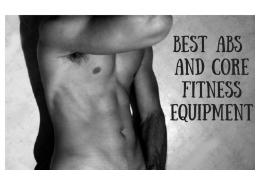The Complete Guide to Crunches and Sit-Ups

There is no doubt that crunches and sit-ups are two of the ab exercises that everybody knows. When somebody decides to work on their abdominal, these are the workouts that immediately spring to mind. Both the sit-up and the crunch have advantages and disadvantages, so if asked which is better, there isn’t a straight answer, so doing both is certainly a good option.
In this guide I start by explaining the difference between a sit-up and a crunch. I then detail why some fitness enthusiasts may suffer back pain after sit-ups and how this can easily be avoided. Next up I detail some variations you can use when doing either of these exercises. I finish by detailing some handy equipment that you can use to enhance your training.
The Difference between a Sit-up and a Crunch
A sit-up involves you moving from a lying position to a sitting position, where your back obviously comes all the way off the floor. A crunch sees you lift just the upper body from the floor (your back remains on the floor) and is more concentrated on your abdominal muscles. A good crunch will see you concentrating on those abs when you pull up, and holding that squeeze for a few seconds before lowering yourself down again.

The Right Way to Perform Sit-ups and Crunches
One of the most important factors when performing both sit-ups and crouches is breathing at the right time. Many people have a tendency to hold their breath throughout the whole of a sit-up or a crunch, but this is certainly the wrong approach. As you lift your upper body from the floor, you should be exhaling, while both deep exhalations and inhalations will actually lessen the pain experienced during the exercises. Breathing should be slow and controlled throughout your exercises.
Many people practicing sit-ups for the first time may encounter some back pain and there might be a number of reasons for this. Firstly the motion should be somewhat smooth, instead of the speedy, almost jerky method some people employ, which usually sees a poor posture too. A good warm up beforehand is certainly a must, while the sit-ups can be aided by other workouts on your lower back.
 Variations of Sit-Ups and Crunches
Variations of Sit-Ups and Crunches
There are a number of effective variations you can use when practicing sit-ups and crunches. The sitting sit-up involves you sitting on a chair with your feet flat on the floor. You’ll then grab something heavy, perhaps a book, and hold it to your chest, before lowering your chest to your knees, keeping your butt in position on the seat. The hands out sit-up sees you extending your arms outward so you form a T-shape while lying on the floor. You’ll now perform a sit-up with your arms still outstretched, before extending your arms above your head and holding the position for five seconds. You’ll then move your arms out to the sides again before lowering yourself down again.
A good crunch variation is the bicycle crunch. As you perform the crunch, bring your knees in towards your chest. Now bring your right elbow to the opposite knee, while straightening your other leg to about a 45 degree angle to the floor. Now switch sides and do the opposite motion for the next rep. The reverse crunch sees you lie on your back and lifting your legs in the air with the knees bent, while placing your hands on the floor beside you. You’ll now use your lower abs to curl your hips towards your chest, before slowly lowering them again.
An alternative which has really taken off recently is Planking, where holding your posture is the main goal.
Crunches and Sit-Ups Fitness Equipment
Ab-Roller – This piece of equipment helps to take the strain off the back and the neck when doing ab exercises, helping you to do the exercise for longer and making them more effective. Just place your head on the headrest, hold the handle bars and do crunches as you normally would.
Here are some reviews of Ab Rollers:
Body Sculpture Ab Roller with Headrest
Sit-up Benches – These can be one of the most beneficial pieces of sit-up equipment. They are adjustable, meaning you can increase or decrease the resistance quickly and easily, while they also give added support and comfort while you work out. The best selling sit up bench on amazon.co.uk (with a lot of good feedback too) is the DTX Adjustable, check out the review here.
Stability Ball – A stability ball can be a great help for your crunches and sit-ups. A study concluded that crunches performed on a stability ball boosted the activation, or flexing, of the muscles by around 25%, while also giving added support.
Power Tower – Otherwise known as a vertical knee raiser, this is one of the best tools for ab workouts, with special arm and back pads to rest against whilst exercising. Ensure your back is firmly held against the pad and then raise your knees, working the central abs.
For a guide to finding the perfect ab and core equipment for your needs check out the Ab and Core Fitness Equipment Guide.
Alternatively, you can see the most popular ab equipment around on this page at Amazon.co.uk (check those offers for yourself now!)


